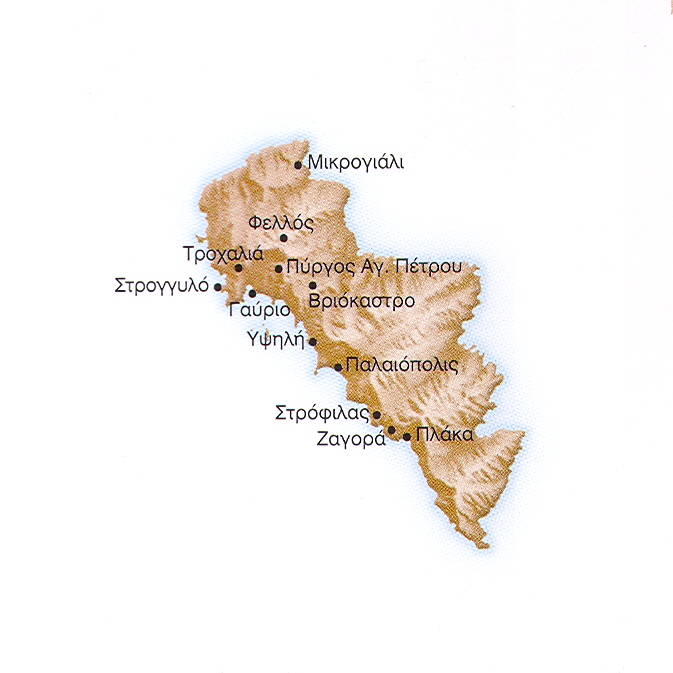ANDROS
Andros is the northern of the Cyclades and also the largest. The numerous natural anchorages on the east coast make the island a safe step for navigation between Euboea and the Cyclades. The importance of Andros in prehistory must be emphasized. At Vryokastro, Mikrogiali and mainly at Strofilas important settlements of the Neolithic and Early Bronze Age have been investigated. Among other discoveries one of the oldest shrines known in the Cyclades was found at Strofilas. The site of Plaka, at the south part of the island, attests human presence during the Early and Middle Bronze Age but evidences of Late Bronze Ageoccupation is very sporadic. Unexpectedly, after the fall of the Mycenaean civilization Andros demonstrated an unusual liveliness. Not less than three settlements are attested at Zagora, Ypsili and to a lesser extent Palaiopolis.
At Zagora the first traces for human occupation date to the tenth century BC but the site acquired its full extent during the eighth century BC. A defensive wall marks the East boundary of the settlement, cutting it off from the inland. At the centre of the plateau there was an open air sanctuary. The site was abandoned in the late eighth century BC, but the sanctuary remained in use and a temple was built there during the sixth century BC, probably dedicated to Athena Polias.
The site Ypsili is located further to the north. The settlement was already in place between the 10th and the 9th centuries BC but the period of flourishment belongs to the the eighth century. The largest part of the settlement was abandoned by the sixth century BC. As in the case of Zagora, an important fortification wall surrounded the Geometric settlement. In the center of the upper plateau a sanctuary founded in the Late Geometric period and remained in use probably untill the fifth century BC. The preserved temple belongs to the Archaic period. The finds suggest that it may have been dedicated to Demeter.
The development of Palaiopolis in the Archaic period coincides with the abandonment of Zagora, and the partial desertion of Ypsili. Therefore the site will be the main center of the island for a millennium. Among the major infrastructure and public buildings extending from the port to the theater it may had been a sanctuary dedicated to Artemis Tauropolos.
BIBLIOGRAPHY
Ανδριακά Χρονικά 21 (1993) [Τα περί Άνδρου].
Α. Cambitoglou et al., Zagora I, Athens 19922.
Α. Cambitoglou et al., Zagora II, Athens 1988.
Α. Cambitoglou, Αρχαιολογικό Μουσείο Άνδρου, Athens 1981
A. Balkas (ed.), Άνδρος και Χαλκιδική, Ανδριακά Χρονικά 29 (1998).
L. Palaiokrassa, Παλαιόπολις Άνδρου. Τα οικοδομήματα από την προανασκαφική έρευνα, Athen 1996.
L. Palaiokrassa-Kopitsa (ed.), Παλαιόπολη Άνδρου. Είκοσι χρόνια ανασκαφικής έρευνας, Athens 2007.
D. Paschalis, Η Άνδρος, Athens 1925.
Ch. Televantou, Άνδρος. Τα μνημεία και το αρχαιολογικό μουσείο, Athens 1996.
C. Televantou, Άνδρος, Η αρχαία πόλη της Υψηλής, Athens 2008.


